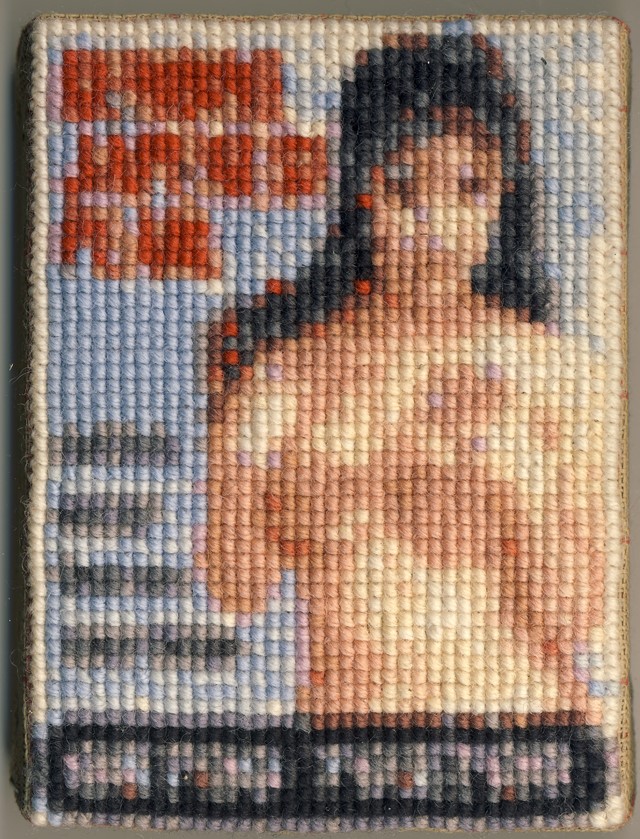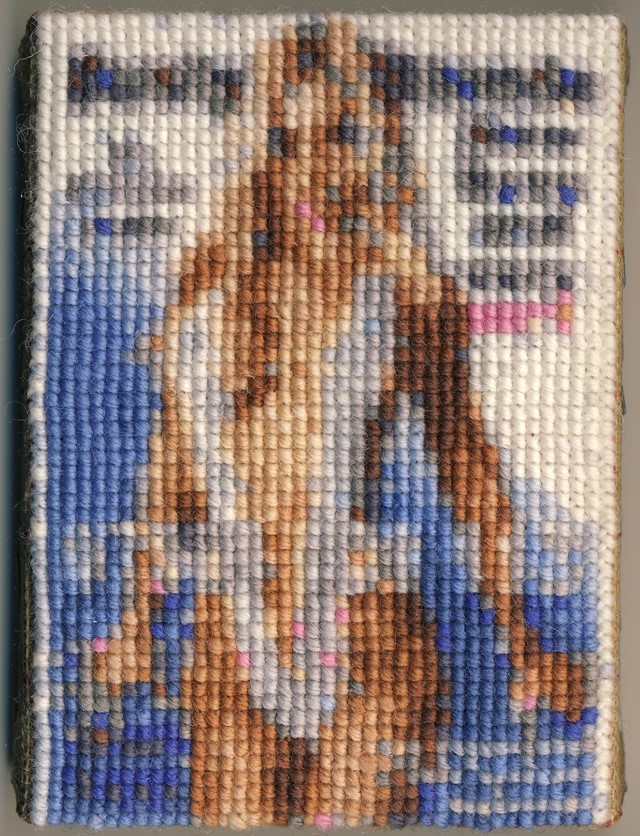Bella Freud celebrates the first anniversary of her Chiltern Street store with an exhibition of Holger Auffenberg's painstakingly stitched pieces – funny, tender, nostalgic tributes to a rapidly disappearing Soho
British fashion designer Bella Freud has long found renown through her simple knits bearing graphic lettering – the number ‘1970’ in bold black on white, for example, or the looping cursive of ‘Ginsberg is GOD’ both as recognisable a signature as they come. It seems a natural fit, therefore, that the brand celebrate the first anniversary of its London store, situated at 49 Chiltern Street in Marylebone, with an exhibition drawing attention to an artist similarly fascinated by woven textures – albeit 'graphic' images of a slightly different variety.

German artist Holger Auffenberg graduated from the Royal College of Art some 15 years ago with an MA in Fashion Menswear and an obsession with photo-realistic needlepoint. “Working a lot with graphics programmes in my professional work as a designer, I was fascinated by the progress of pixellation, and how it affects the readability of the subject shown,” Auffenberg tells AnOther. “Needlepoint or cross-stitch, with its clear square grid structure, was an ideal medium to translate some of these principles.” He turned his hand to recreating found imagery, executing pieces which could take weeks or months to finish, and found himself pushing back against pleas to make sure his chosen subject matter was “suitable”. “I strongly disagreed with that,” he continues, “I find that people approach a piece of needlework with certain expectations, which are mainly based on either complete ignorance or on an old-fashioned view of crafts. One should never pander to the expectations of the masses.”

So it was that Auffenberg came to cross-stitch the postcards left by sex-workers in red phoneboxes in the vicinity of London’s Soho – a simultaneously seedy and glamorous phenomenon which fascinated the artist, and seemed oddly synonymous with the eclectic borough. “The British red phoneboxes used to be such an iconic symbol of London that anything related to them was of a certain interest to me,” he says. “And, with the advent of mobile phones it soon became apparent that these cards would disappear, together with the phoneboxes.” The gradual disappearance of these famously British structures is a microcosm of Soho’s larger-scale erosion, as it is swiftly refurbished by billionaire property owners. “Soho itself had a fragile balance of patrons: Michelin-starred restaurants next to doorways with ‘Model Upstairs’ in neon. With the juggernaut of commerce crushing anything in its way, these quirks will soon have disappeared.” Thus, the resulting pieces – hazy, beautiful, painstakingly stitched recreations of these postcards, evoking a kind of wonderment with a tongue-in-cheek humour – came to represent a far greater conversation.

Auffenberg and Freud met through a mutual friend, and immediately identified the potential for a collaboration in their mutual interest in knitted and woven surfaces. Alongside the pieces which are on display in the shop as of today, Auffenberg has created a series of works especially for Bella Freud, while a number of the pieces from the designer’s own collection feature motifs from the artist’s work, too. “The result is a very relaxed and harmonious collaboration,” Auffenberg explains. Freud agrees wholeheartedly. “I’d had a plan from the start to do small exhibitions in my shop. It’s not a gallery, so I wanted something unusual that you wouldn’t find in a normal gallery environment. When I saw Holger's tapestries I was struck with how beautiful and funny they are, and that he brings a lot of love and thoughtfulness to the images.”

Holger Auffenberg's needlepoint works will be on display at Bella Freud's London store at 49 Chiltern Street until December 8, 2016.
